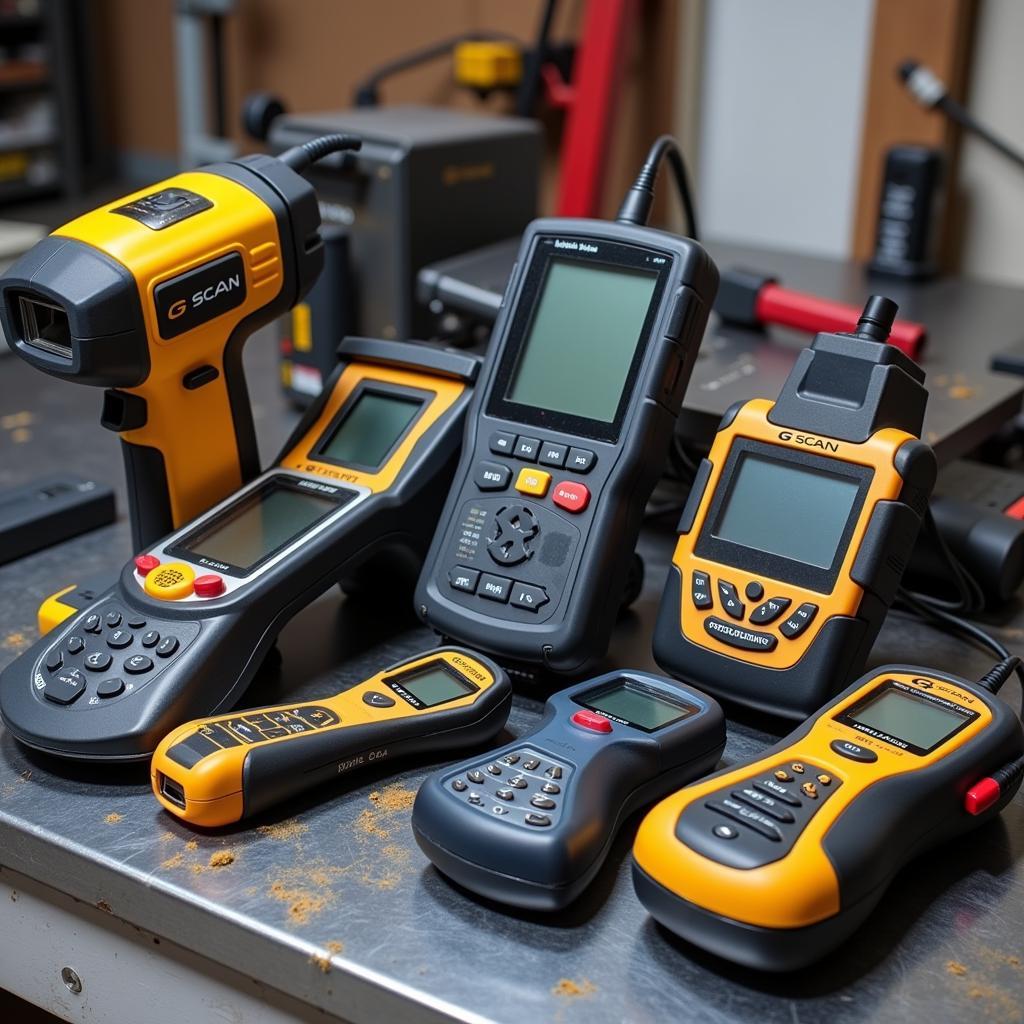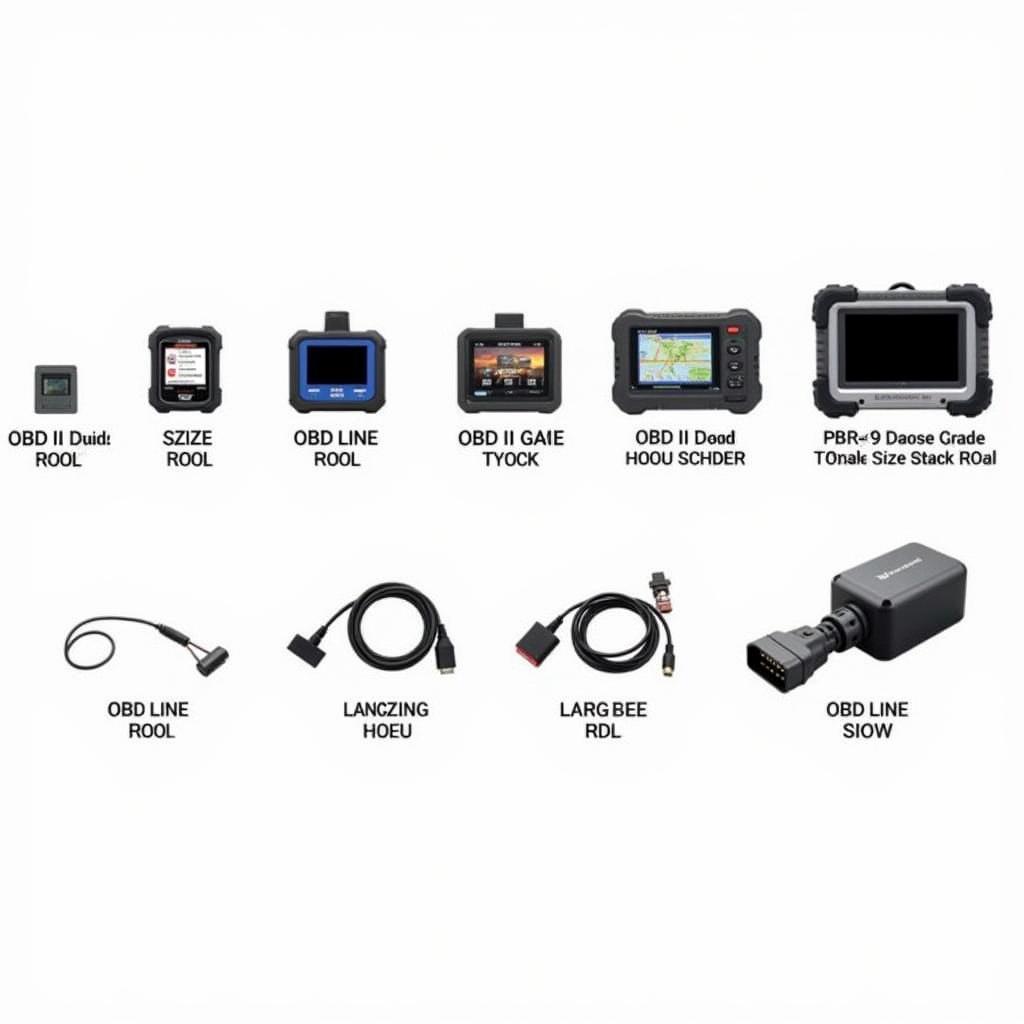If you’re experiencing issues with your 2011 Honda Pilot’s acceleration, idle speed, or engine performance, a throttle body relearn procedure might be the solution. This detailed guide will walk you through the process of performing a 2011 Honda Pilot throttle body relearn with a scan tool, equipping you with the knowledge to tackle this common issue.
Understanding the Throttle Body and Relearn Procedure
The throttle body is a crucial component of your Honda Pilot’s engine management system. It regulates the amount of air entering the engine, directly influencing engine speed and power output. Over time, carbon buildup or electrical glitches can disrupt the throttle body’s calibration, leading to performance hiccups.
A throttle body relearn procedure essentially recalibrates the throttle position sensor (TPS) with the engine control unit (ECU). This synchronization ensures that the ECU accurately interprets throttle position and adjusts the air-fuel mixture accordingly, restoring smooth engine operation.
When is a Throttle Body Relearn Necessary?
Recognizing the symptoms of a miscalibrated throttle body is crucial for prompt action. Here are some telltale signs indicating the need for a 2011 Honda Pilot throttle body relearn:
- Rough idling: The engine might idle erratically or stall frequently, especially after a cold start.
- Hesitation or surging during acceleration: You might experience a noticeable delay or uneven power delivery when stepping on the gas pedal.
- Increased fuel consumption: A miscalibrated throttle body can lead to a richer air-fuel mixture, negatively impacting fuel economy.
- Check Engine Light illumination: While not always directly related to the throttle body, the Check Engine Light can indicate a problem with the engine management system, including throttle body issues.
If you observe any of these symptoms, performing a throttle body relearn procedure is highly recommended.
Performing the 2011 Honda Pilot Throttle Body Relearn with a Scan Tool
While some vehicles allow for a manual throttle body relearn procedure, the 2011 Honda Pilot specifically requires a scan tool to communicate with the ECU. Here’s a step-by-step guide to guide you through the process:
Step 1: Gather the Necessary Tools and Equipment
Before starting the procedure, ensure you have the following:
- A compatible scan tool: Choose a scan tool specifically designed to work with Honda vehicles and supports throttle body relearn functions.
- A fully charged car battery: A stable power supply is crucial for seamless communication between the scan tool and the ECU.
Step 2: Prepare the Vehicle
- Park your 2011 Honda Pilot on a level surface and engage the parking brake.
- Turn the ignition switch to the “ON” position without starting the engine.
- Connect the scan tool to the vehicle’s OBD-II port, typically located under the dashboard on the driver’s side.
Step 3: Access the Throttle Body Relearn Function
- Power on the scan tool and follow the on-screen prompts to establish communication with the vehicle’s ECU.
- Navigate through the scan tool’s menu to locate the “Throttle Body Relearn” or “TPS Calibration” function. The exact wording might vary depending on the specific scan tool model.
Step 4: Initiate the Relearn Procedure
- Once you access the throttle body relearn function, the scan tool will guide you through the specific steps. Carefully follow the on-screen instructions.
- The relearn procedure typically involves monitoring the scan tool’s display for specific prompts, such as turning the ignition off and on, depressing the accelerator pedal, or waiting for a predetermined time interval.
Step 5: Verify Successful Relearn
- After completing the on-screen instructions, the scan tool will indicate whether the throttle body relearn procedure was successful.
- If successful, disconnect the scan tool from the OBD-II port.
- Start the engine and let it idle for a few minutes, observing for any signs of previous issues like rough idling or hesitation.
Common Issues and Troubleshooting
While the throttle body relearn procedure is generally straightforward, you might encounter some hiccups along the way. Here are a few common issues and troubleshooting tips:
- Scan tool fails to communicate with the ECU: Ensure the scan tool is compatible with Honda vehicles and the OBD-II connection is secure.
- Relearn procedure fails to complete: Verify that the battery is fully charged and try repeating the procedure from the beginning.
- Symptoms persist after the relearn: If the engine issues persist, it’s crucial to inspect for other potential problems, such as vacuum leaks, faulty spark plugs, or a malfunctioning mass air flow sensor. Consulting a qualified mechanic is advisable.
Expert Insights
John Miller, ASE Certified Master Technician, shares his insights:
“The throttle body relearn procedure is a common maintenance task for many modern vehicles, including the 2011 Honda Pilot. Using a compatible scan tool and following the proper steps ensures accurate throttle body calibration, restoring optimal engine performance.”
Conclusion
Performing a 2011 Honda Pilot throttle body relearn with a scan tool is a relatively simple yet essential procedure for maintaining optimal engine performance. By understanding the symptoms of a miscalibrated throttle body, gathering the necessary tools, and following the step-by-step instructions outlined in this guide, you can confidently tackle this common issue and ensure your Honda Pilot continues to deliver a smooth and efficient driving experience.
If you encounter any difficulties during the process or have any further questions, don’t hesitate to reach out to the experts at ScanToolUS for personalized assistance. You can contact us at +1 (641) 206-8880 or visit our office at 1615 S Laramie Ave, Cicero, IL 60804, USA.
FAQs
1. Can I perform a throttle body relearn on my 2011 Honda Pilot without a scan tool?
No, the 2011 Honda Pilot specifically requires a scan tool to perform a throttle body relearn procedure.
2. How often should I perform a throttle body relearn on my Honda Pilot?
It’s generally recommended to perform a throttle body relearn after any service or repair that involves disconnecting the battery, throttle body, or ECU.
3. Will a throttle body relearn fix a check engine light?
While a throttle body relearn can potentially resolve a check engine light related to throttle body issues, it’s crucial to diagnose the underlying cause of the check engine light using a scan tool to determine the appropriate course of action.
4. Can a dirty throttle body cause issues requiring a relearn?
Yes, a dirty throttle body can disrupt airflow and sensor readings, potentially leading to symptoms that necessitate a throttle body relearn.
5. Is it safe to drive my Honda Pilot with a miscalibrated throttle body?
While driving with a slightly miscalibrated throttle body might be possible, it’s not recommended as it can lead to reduced engine performance, increased fuel consumption, and potential engine damage in the long run.
6. What are some other common causes of rough idling or engine hesitation in a 2011 Honda Pilot?
Other potential causes include vacuum leaks, faulty spark plugs, a malfunctioning mass air flow sensor, or fuel system issues.
7. Can I use any OBD-II scan tool for the throttle body relearn procedure?
No, not all OBD-II scan tools support throttle body relearn functions. Ensure the scan tool you choose is compatible with Honda vehicles and specifically mentions this capability.


